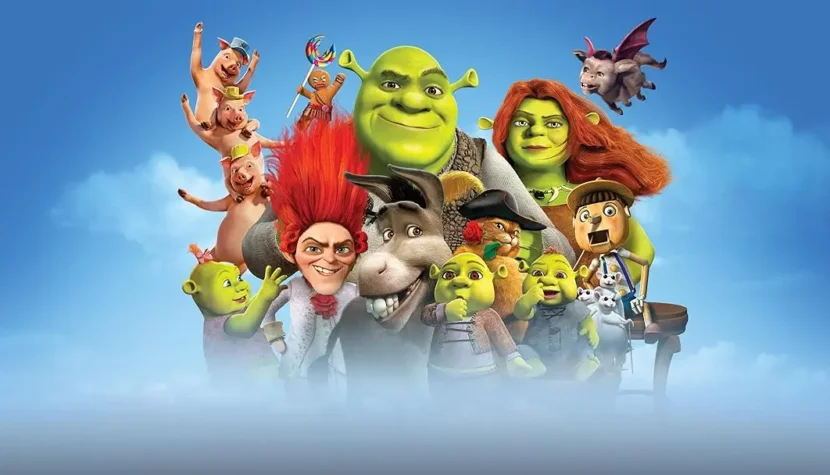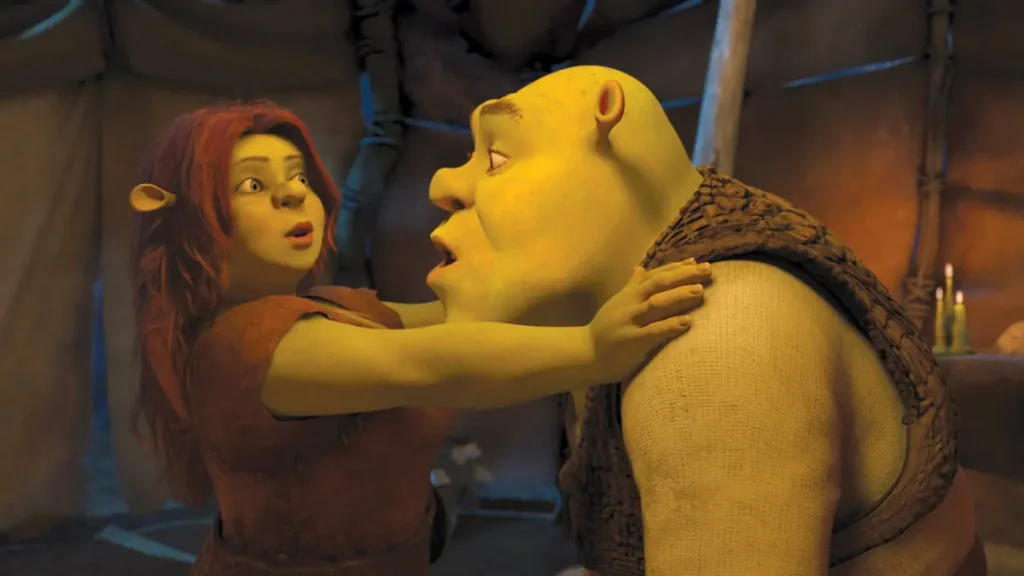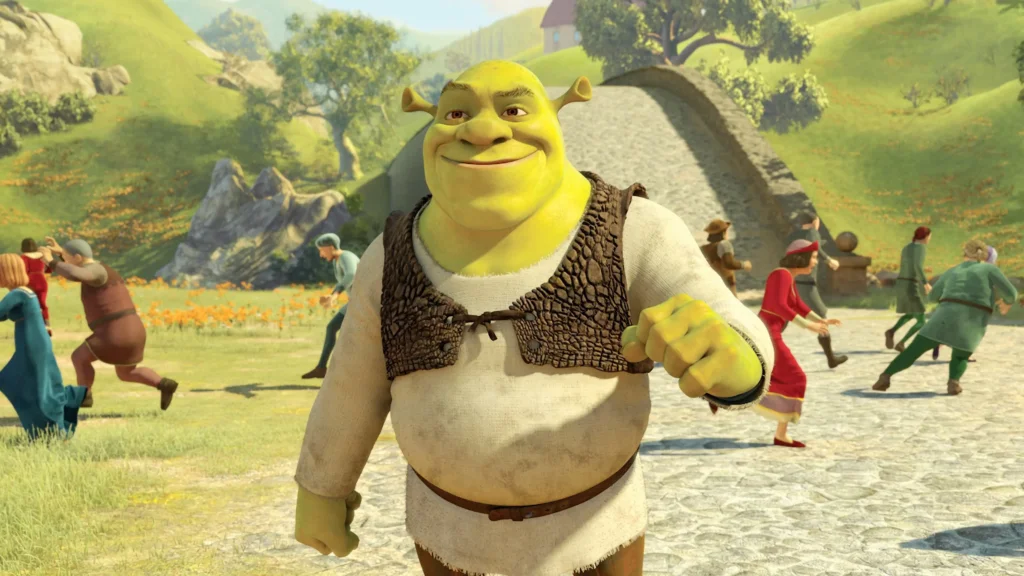SHREK FOREVER AFTER. Creative, original cinema

Since my first viewing, I’ve had a great fondness for the original “Shrek”. I still won’t deny DreamWorks the credit for its innovation within the mainstream animated cinema of the time. However, over time and with repeated viewings, I began to notice certain imperfections in it. “Shrek” engages the audience in a game of catching references and winks, deciphering parodies. It constantly, without a break, demands the viewer’s erudition and knowledge. After a while, it can feel as though the creators were primarily concerned with (or at least equally focused on) fitting perfectly into the patterns of postmodern cinema, rather than on the story itself and its characters. Despite the witty dialogue and lively staging, the 2001 animation remains, for me, a film that’s a bit too superficial.
Don’t get me wrong. I feel Shrek’s emotional struggles, and I’m moved by the challenging friendship with Donkey. However, I believe the balance between intertextual fun and building genuine drama was not distributed correctly. The situation is different with the excellent “Shrek Forever”, which is strongly tied to the original “Shrek” but gives it new depth, beautifully elevating it. Yet, “Shrek Forever” cannot exist independently. It inserts itself into the already established story, modifying it. It becomes a variation on the themes from the first ogre movie. The creators approach them seriously, asking meaningful questions. They are guided by a clear and imaginative concept, which they consistently develop. This is one of the great values of “Shrek Forever After”.

The first scenes suggest a conventional continuation of the third part. Shrek and Fiona return to their home in the swamp. At first, raising their three children brings joy to the main character, but over time, it begins to bore him. Later, with no time for himself, Shrek becomes deeply frustrated. To the point where he starts to regret ever meeting Fiona. At that moment, he loses what has always been most dear to him: his beloved sense of privacy, the joy of having the image of a terrifying, human-eating ogre, surrounded by peace, quiet, with no responsibilities or obligations.
It is then that he stumbles upon the devious Rumpelstiltskin. Originally a character from German folklore, he is skillfully integrated into the “Shrek” universe. The dwarf trades in dreams, but of course, not selflessly. His ambition is to take control of Far Far Away. He plans to do this by erasing Shrek from history. Rumpelstiltskin buys a day from the ogre’s life, choosing the day Shrek was born. This effectively wipes out all the events in which Shrek took part. It makes the ogre never exist. He never rescues Fiona, never meets Donkey, and never sits on the royal throne. Thanks to his absence, history unfolds entirely differently.
In exchange, the main character is given another twenty-four hours to enjoy freedom, cause chaos, wallow in mud, and scare villagers who come after him with pitchforks. Shrek carelessly signs the contract, not noticing a hidden catch. After the day ends, the ogre will disappear. He’ll vanish into thin air as if he never existed. Before that happens, however, he has a chance to set things right, to redeem himself in his own eyes. His signature thus becomes his sentence. Yes, this animation is based on the narrative skeleton of “It’s a Wonderful Life” by Frank Capra.

“Shrek Forever After” presents an alternative story to the one known from the first film. There are several very interesting shifts in meaning (such as in the non-stereotypical treatment of gender roles) and plot twists in relation to the original. Most notably, Fiona freed herself from the tower to join an underground army of ogres. Her goal is to overthrow the tyrant Rumpelstiltskin and restore safety to the ruined kingdom. Among the ogres, Fiona must remain in hiding, especially since her curse is still in effect: “By day she’s fair, by night she’s foul.” However, in “Shrek Forever After”, Fiona is only known as an ogress by her companions. Her human form could bring her downfall. In her current surroundings, humans are seen as the enemy.
Each of the main characters in the series gets a new role. Their personalities remain the same, but their circumstances change. Some are led toward caricature (Puss in Boots), while others are driven to the brink of poverty and hunger (Donkey). However, the chemistry that binds the characters together remains, even in this new, much harsher reality. The creators seem to suggest that, even if fate took the least fortunate turn, Shrek would still meet Donkey by chance. This is the logic of fairy tales at work. The formation of this friendship is evidently guided by destiny. However, in his relationship with Fiona, Shrek must demonstrate determination to win her back. Here, nothing happens by accident.
“Shrek Forever” also has its own specific, darker visual tone. In the three previous films, the creators took us through a colorful, safe world that at times resembled (and parodied) Disneyland. In “Shrek Forever After”, the locations familiar to the audience take on an entirely different character. The castle in Far Far Away is a dark fortress with broken windows and homeless people in the streets. Meanwhile, Shrek’s swamp, always teeming with life and hidden behind tall trees with leaves in all shades of green, becomes a foggy wasteland where not a single blade of grass can grow. Witches flying on broomsticks have replaced the birds in the air. The alternate reality no longer resembles a fairytale land; it’s more like the entrance to Tolkien’s Mordor.

Mike Mitchell’s animation avoids constantly referencing other works, either in language or visuals. Pop culture is no longer the central point of the film. The creators code their film outside of it. This time, the “Shrek” universe itself, already clearly shaped and self-contained, takes center stage. It serves as the matrix for “Shrek Forever”. As a result, the film appears purer, more focused on its own story, without overtly feeding off the legacy of mass culture.
“Shrek Forever After” never feels like a calculated film. It’s creative, original cinema that stands on its own and even, at times, surpasses the original. It makes the iconic first part a fuller story by expanding it with several hypothetical but valid plotlines. This is what every sequel should aim for, and “Shrek Forever After” more than succeeds in this regard.

